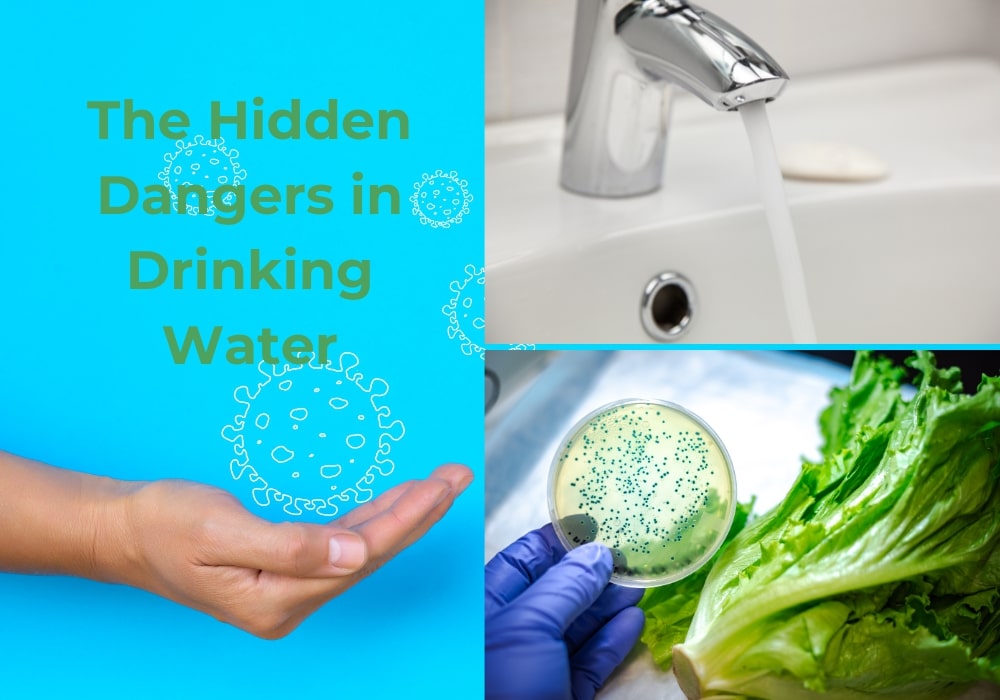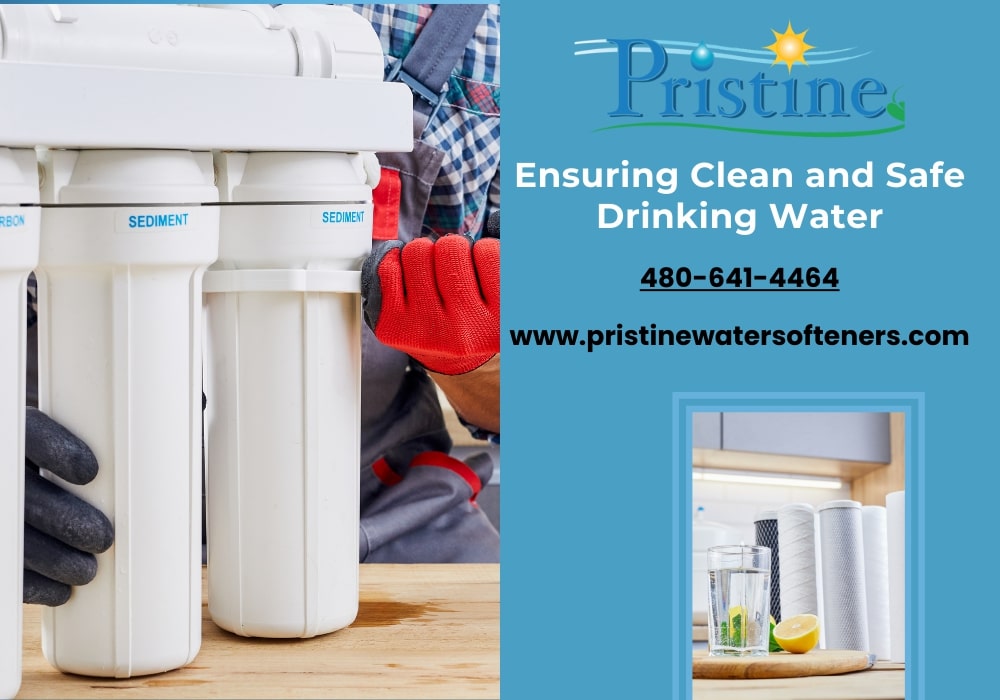Contaminated drinking water is a serious issue that affects many people around the world. When water becomes contaminated, it can pose severe health risks. Understanding the dangers of drinking contaminated water and the diseases caused by it is crucial for protecting yourself and your family. In this blog post, we will explore how contaminated drinking water can make you sick and the hidden dangers associated with it.
What is Contaminated Drinking Water?
Contaminated drinking water refers to water that has been polluted by harmful substances, including bacteria, viruses, chemicals, and heavy metals. When people consume contaminated drinking water, they are at risk of various diseases caused by drinking contaminated water. Numerous diseases caused by drinking contaminated water are linked to neglected tropical diseases, particularly in regions where premises available when needed are lacking.
Contaminated drinking water can come from various sources, such as improper waste disposal, industrial runoff, or natural contaminants. Factors like climate change and population growth further exacerbate the issue, making it essential to understand where contamination comes from to effectively prevent and address diseases caused by drinking contaminated water.
Diseases Caused by Drinking Contaminated Water
Drinking contaminated water can lead to a range of diseases, including diarrhoea, cholera, and dysentery typhoid. These diseases are often caused by poor drinking water quality and different types of contaminants, such as bacteria, viruses, and chemicals. Alongside contaminated food, unsafe water can pose severe health risks. Let’s look at some common diseases associated with managed drinking water services and how contaminated drinking water contributes to them.
Waterborne Diseases
Waterborne diseases are caused by pathogens such as bacteria, viruses, and parasites. These pathogens can cause severe health issues. Some common waterborne diseases include:
- Cholera: Caused by the bacterium Vibrio cholerae, cholera leads to severe diarrhea and dehydration. It is often spread through contaminated water.
- Giardiasis: This disease is caused by the parasite Giardia lamblia. It can lead to diarrhea, stomach cramps, and nausea.
- Dysentery: Caused by bacteria or parasites, dysentery results in severe diarrhea with blood or mucus.
Chemical Contaminants
Chemicals in contaminated water can also pose serious health risks. Some common chemical contaminants include:
- Lead: Exposure to lead through drinking water can cause developmental problems in children and kidney damage in adults.
- Nitrates: High levels of nitrates can cause methemoglobinemia, or “blue baby syndrome,” which affects the ability of blood to carry oxygen.
- Pesticides: These chemicals can lead to various health problems, including cancer and endocrine disruption.
Heavy Metals
Heavy metals can contaminate drinking water through industrial activities and natural sources. Some heavy metals and their effects include:
- Arsenic: Long-term exposure to arsenic can lead to cancer and skin lesions. It can also affect the cardiovascular and respiratory systems.
- Mercury: Mercury exposure can cause damage to the kidneys and nervous system.
How Contaminated Drinking Water Affects Health
Contaminated drinking water can affect health in various ways. The impact often depends on the type and level of contamination. Here’s how:
Short-Term Effects
Ingesting contaminated water can cause immediate health problems. Symptoms of short-term effects may include:
- Diarrhea: Frequent, watery stools that can lead to dehydration.
- Nausea and Vomiting: Feeling sick to the stomach and throwing up.
- Stomach Cramps: Pain and discomfort in the abdominal area.
Long-Term Effects
Chronic exposure to contaminated water can lead to more severe health issues over time. These may include:
- Cancer: Long-term exposure to certain chemicals and heavy metals is linked to various types of cancer.
- Kidney Damage: Contaminants like lead and mercury can damage the kidneys.
- Developmental Issues: Children exposed to contaminants may experience developmental delays and learning difficulties.
Prevention and Safety Measures
Ensuring safe drinking water is crucial for avoiding the diseases caused by drinking contaminated water. Here are some measures to help protect yourself and your family:
Water Filtration
Using a water filter can remove many contaminants. Look for filters that are certified to remove specific contaminants.
Regular Testing
Regular testing of your water supply helps identify contamination early. Testing kits can detect common contaminants and ensure your water is safe.
Boiling Water
Boiling water can kill many pathogens and make it safer to drink. Boil water for at least one minute to ensure it is free from harmful microorganisms.
Proper Waste Disposal
Properly dispose of chemicals and waste to prevent contamination of water sources. This helps reduce the risk of chemical and heavy metal contamination.
Ensuring Safe Drinking Water: Key Components and On-Premises Management
Safely Managed Drinking Water
Extended exposure to chemical pollutants may cause greater harm. For example, having too many heavy metals in the body might cause long-term health problems. Over time, exposure to drugs and pesticides can have serious long-term effects, such as cancer and reproductive problems.
- Source Protection: Safe drinking water starts with protecting the sources from which it is drawn. This means preventing pollution from agricultural runoff, industrial discharges, and waste disposal that could contaminate natural water sources like rivers, lakes, and aquifers.
- Water Treatment: Before water reaches your tap, it typically undergoes several treatment processes to remove contaminants. These processes may include filtration, sedimentation, disinfection (such as using chlorine or UV light), and sometimes chemical treatment to remove harmful substances.
- Quality Monitoring: Regular testing and monitoring of water quality are essential to ensure that it remains safe. This involves checking for microbial contaminants, chemicals, and other pollutants. Water utilities often perform routine tests and maintain records to track water quality.
- Distribution System Management: Once treated, water is distributed through a network of pipes. Safely managed drinking water requires maintaining this distribution system to prevent contamination from leaks, pipe degradation, or cross-connections with non-potable water sources.
- Emergency Preparedness: Having plans in place for emergencies, such as contamination incidents or natural disasters, is part of safe management. This includes having alternative water supplies and communication strategies to inform the public if issues arise.
Located on Premises
Located on premises means that the facilities and systems for managing and providing drinking water are situated on the property where the water is used. For residential or commercial buildings, this typically involves:
- On-Site Water Treatment Systems: Some properties may have their water treatment systems, such as wells with filtration units or treatment devices installed directly at the location. These systems are responsible for treating and ensuring the water is safe before it is used.
- Storage Facilities: Water storage tanks or cisterns may be located on the premises to hold water until it is needed. Proper maintenance of these storage facilities is crucial to prevent contamination.
- Plumbing Infrastructure: The internal plumbing system, including pipes, faucets, and fixtures, is located on the premises and must be maintained to ensure that water remains clean and uncontaminated as it is delivered to different areas of the building.
- Maintenance and Repairs: On-site facilities require regular maintenance and repairs to address any issues that could impact water safety. This includes inspecting and servicing water treatment equipment, fixing leaks, and ensuring that the plumbing system is in good condition.
Drinking Water Services
Drinking water services refer to the range of activities and systems involved in providing safe and clean water for consumption. These services typically include:
- Water Supply Management: This involves the sourcing, treatment, and distribution of water to ensure it meets safety standards. Water suppliers are responsible for managing the entire supply chain, from sourcing water to delivering it to households and businesses.
- Customer Service: Providing information and support to consumers about their water supply, including answering queries, handling complaints, and providing educational resources about water safety.
- Billing and Administration: Managing the financial aspects of water services, including billing for water usage, managing accounts, and ensuring that the financial aspects of water service delivery are handled efficiently.
- Regulation and Compliance: Ensuring that all aspects of water supply and management comply with local, national, and international standards and regulations. This includes meeting safety and quality standards and undergoing regular inspections and audits.
Emergency Response: Having systems and protocols in place to address any water-related emergencies, such as contamination events, supply interruptions, or infrastructure failures. This ensures that the public is informed and that solutions are implemented promptly.
Protect Your Family with Pristine Water Softeners: Ensuring Clean and Safe Drinking Water
Don’t wait until it’s too late—ensure your family’s health by addressing potential risks from microbiologically contaminated drinking water and poor sanitation practices. Start by investing in a high-quality water filtration system to remove harmful substances and protect your health. Regularly test your water supply to catch any contamination early, especially if you’re relying on managed drinking water services, and take necessary action.
Consider boiling your water if you’re unsure about its safety, as hundreds of millions of people are affected by infections and numerous neglected diseases caused by contaminated drinking water. Always practice proper waste disposal to prevent contamination at the source. For those managing their own water systems on-premises, routine maintenance and monitoring are essential to keep your water clean and safe.
At Pristine Water Softeners, we’re dedicated to helping you achieve the highest standards of water safety. Contact us today to learn more about our water treatment solutions and how we can assist you in safeguarding your drinking water. Your health and well-being are our top priorities—act now to ensure that your water remains pure and free from contaminants.



